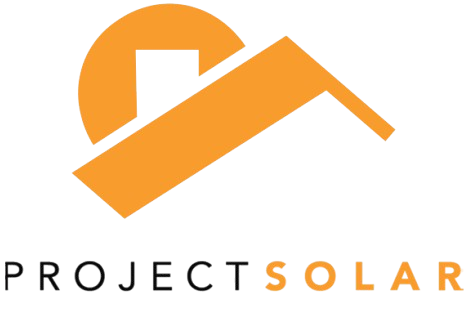Solar Battery: How It Works, What to Know

Some or all of the mortgage lenders featured on our site are advertising partners of NerdWallet, but this does not influence our evaluations, lender star ratings or the order in which lenders are listed on the page. Our opinions are our own. Here is a list of our partners.
A solar battery stores solar energy for use at another time. Manufactured by companies including Panasonic, LG, Generac and Tesla, solar batteries typically costs $12,000 to $22,000. Buying a solar battery may be a good choice if you’re looking to use less grid electricity or go off-grid completely .
» MORE: Best solar companies of 2024
Are solar batteries worth it?
A solar battery can be worth the price if you own rather than rent, if you're able to afford the upfront costs, if you're willing to maintain the battery and if you live in an area with high electricity costs and/or frequent outages.
| Pros | Cons |
|---|---|
| Lower energy bills. | Expensive to purchase and replace. |
| Environmental benefits — reduced need for fossil fuel generated power/lower carbon footprint. | Limited energy storage capacity. |
| Long life span options. Many can last up to 20 years or longer. | Safety concerns if improperly installed, ventilated or maintained. Some types can overheat and catch fire. |
| Possible federal and state tax incentives. | Regular maintenance required on some types. |
| Provides backup energy in the event of a blackout, regardless of weather. | Some types can be bulky and take up a lot of space. |
| Can avoid high peak-use-hours charges. | Requires proper disposal. |
| Increased energy efficiency. | Some types, such as nickel-cadmium, may contain materials that are harmful to the environment. |
| Less dependency on the grid. | Renters don’t qualify for federal tax incentives. |
| Can operate in tandem with a grid-tie system. | Some require special equipment for installation. |
| Quiet power, unlike generators. | Some may emit harmful gasses. |
| Can also be used for microgrids and portable power units. | Not all battery types are readily available for residential systems. |
How does a solar battery work?
When you pair your solar energy system with a solar battery, the surplus energy your system generates goes straight to the battery, where it’s stored for later use (as opposed to that surplus automatically being returned to the grid) .The energy stored in your battery bank can then be used later when you need it most, such as during a power blackout. Here’s how it works:
- Solar panels use photons from the sun to knock electrons away from atoms and generate an electrical flow.
- The excess electricity generated by the solar panels is stored as direct current (DC) energy in the solar battery.
- An inverter converts the DC energy to alternating current (AC) energy for home use — either as needed, if you have a DC-coupled conversion system — or immediately for instant use if you have an AC-coupled conversion system. Excess power in this type of system can be converted back to DC to charge the battery.
A solar system with a solar battery may include these basic components:
- Ground-mounted solar panels or roof-mounted solar panels.
- Battery bank.
- Inverter that converts DC energy into AC energy for home use.
- Junction box to connect solar panel wiring to the home breaker panel.
- Charge controller to prevent battery overheating.
- Utility meter for the battery bank.
- Disconnect switch to prevent islanding (continuing to generate electricity and push it onto the grid) during blackouts. This protects electrical workers trying to restore power.
If your solar system is connected to the grid, you’ll also have an interconnection agreement with your utility provider.
Types of solar batteries
Here are some of the main types of batteries commonly used in solar systems.
Lead acid batteries
These reliable staples are the oldest type of solar batteries, and they are often used for off-grid applications. They’re the most affordable solar battery option, but they have a low energy density, meaning they can't hold a lot of energy for their weight. Compared to other options, they're large and heavy.
Pros
- Dependable, time-tested technology.
- Easy to recycle.
- Lower priced than other types of solar batteries.
- Compatible with most systems.
Cons
- Heavier and bulkier than other types of solar batteries.
- To preserve battery life, it's recommended that you don't let the battery capacity drop below 50%. Other types of batteries can drop to 10% capacity — and sometimes lower — without damaging the system.
- Generally need maintenance such as adding water (unless sealed).
- May emit gasses.
- Shorter life span than other types of solar batteries.
- Take longer to recharge than other types of solar batteries.
- Contain harmful chemicals and they require proper disposal.
Lithium-ion batteries
Well-suited to residential solar systems, lithium-ion batteries offer a small, light and long-lasting solar battery option with a high energy density. This newer technology lets you access more of the battery’s stored energy before needing to recharge it, which is why this type of battery is common in laptops and mobile phones. If they’re not installed properly, however, lithium-ion batteries can catch fire. They’re also pricier than some other types of batteries.
Pros
- Smaller and lighter than other battery types; work well in tight spaces.
- Newer technology with improved battery capacity and efficiency.
- Long life span.
- Little or no maintenance required.
- Fewer batteries needed for power.
- Lithium-ion batteries have a high depth of discharge, meaning if the battery capacity drops to 10%, it won't strain the system or cause the system to degrade.
Cons
- High price.
- Can catch fire if improperly installed.
- Special equipment required for installation.
Nickel-cadmium batteries
Designed mostly for commercial solar systems, nickel-cadmium batteries are rare in smaller residential applications. Because some manufacturers are testing ni-cads for home systems, we may see more of them in the future. Nickel-cadmium batteries use older technology, are low maintenance and long-lasting, have a high discharge capacity and can work efficiently even in extreme temperatures. However, they’re also heavy and bulky, lose charge when they’re not used, are costly and contain toxins that are harmful to the planet when not properly disposed of. Some countries have banned their use.
Pros
- Long life span of up to 20 years or more.
- Nickel-cadmium batteries have a high depth of discharge, meaning if the battery capacity drops to 20%, it won't strain the system or cause the system to degrade.
- Perform well under extreme weather conditions.
- Time-tested technology.
- Low maintenance.
Cons
- Power retention is lower than other battery types.
- Not environmentally friendly.
- Not typically available for residential solar systems.
- Heavy and bulky.
Flow batteries
Engineered for large-scale use with very limited availability to homeowners, this new technology uses water-based electrolytes that flow between two internal tanks. Charging and discharging takes place through chemical reactions within the battery, and increasing the number of tanks can increase total energy storage capacity. Flow batteries are very efficient and have a 100% discharge capacity. They’re also long-lasting and use nontoxic, nonflammable materials. Unfortunately, they’re also heavy, large and expensive. They require a lot of maintenance and have a low power density.
Pros
- Customizable.
- Long life span of 20 years or more.
- Nonflammable and nontoxic materials.
- High efficiency with 100% discharge capacity.
Cons
- Heavy/bulky.
- Considered too expensive for residential use.
- Low power density.
- High maintenance.
How to buy a solar battery
Here are a few important factors to consider and compare:
- Budget. Weigh affordability and durability, and be aware that less expensive lead-acid batteries won’t last as long as lithium-ion batteries, which are more expensive upfront.
- Space. Choose batteries that fit in your available space.
- Warranty: Look for a solid warranty from a reputable manufacturer.
- Battery capacity. For maximum efficiency, be sure this is appropriate for your solar system’s energy production. There are two measurements to consider: Storage capacity is how much energy the battery can hold; usable capacity is the energy the battery can provide minus the energy needed to operate the battery.
- Battery life span. Longer life spans save on battery replacement costs over time and lessen the impact on the environment.
- Round-trip efficiency. This is the measure of how well your battery stores and retrieves energy and how efficient its operation is after it’s charged. The industry standard for this is about 80% .
- Depth of discharge: This is how much power a battery uses before you need to recharge it.
- Maintenance. Lower-priced battery options such as lead-acid typically require more maintenance, and you’ll need to decide how much maintenance you’re willing and able to perform.
- Your system’s voltage requirements. Make sure your battery is compatible with the voltage requirements of your solar panels.
Can I get financing for a solar panel system?
In addition to tax incentives and rebates, there are options available. Many solar installers offer financing, but you may also be able to finance your solar investment through a home equity loan or home equity line of credit (HELOC). These options may have lower interest rates than financing with an installer, future opportunities for refinancing and possible tax benefits.
Home equity loans and HELOCs are ways to borrow against the value of your home, converting equity into cash. With a home equity loan, you receive a lump-sum payment and then pay it back at a fixed interest rate over an agreed period of time, typically from five to 30 years. HELOCs are more akin to a credit card, something you use as needed. You’ll usually have 10 years to draw from the line of credit, during which time you only have to pay interest, and after that you pay both the principal and interest. HELOC interest rates typically are variable, meaning your monthly payment could rise or fall over time. And with each of these options, you're using your home as collateral.
Advertisement
Min. credit score 600 | Min. credit score 600 |
Min. down payment N/A | Min. down payment N/A |
Another option is a solar loan. Many banks, credit unions and online lenders offer these to fund solar panels and installation, with amounts typically from $1,000 to $100,000, and annual percentage rates ranging from 6% to 36%. They function like a personal loan: you receive a lump sum and repay it in equal monthly installments over a set period, typically two to seven years. And unlike with home equity financing, there is no collateral required for a solar loan. This means your home or solar panels aren’t at risk if you miss payments, but you may have to pay late fees.
So, yes, you likely can get financing. If you go this route, compare interest rates, terms and fees with any financing package that a solar provider may offer you to ensure you get the best deal.
Frequently Asked Questions
Are there any tax incentives to offset the cost of a solar battery?
Yes. Depending on when you purchased and installed your solar battery, you may be eligible for a federal tax incentive of between 22% and 30% of the battery’s cost. To qualify, the battery must have a storage capacity of at least 3 kilowatt hours. New construction and existing homes both qualify, as do both primary and secondary residences. The home can be a house, co-op, condo, houseboat, mobile home or manufactured home. Rentals do not qualify for this tax incentive. State incentives may be available in your areas as well. Check this database to see if you qualify for one.
Can I have solar panels without buying a solar battery?
Yes. Without a battery, any excess energy you produce will just go back to the grid rather than be stored in a battery for your future use. This is called a grid-tie system.
What type of solar battery is the most popular for residential use?
Even though they’re pricey, lithium-ion batteries are the most popular type of solar battery for residential use because they’re long-lasting and often don’t need maintenance.
Article sources
NerdWallet writers are subject matter authorities who use primary,
trustworthy sources to inform their work, including peer-reviewed
studies, government websites, academic research and interviews with
industry experts. All content is fact-checked for accuracy, timeliness
and relevance. You can learn more about NerdWallet's high
standards for journalism by reading our
editorial guidelines.
- 1. U.S. Department of Energy. Should I Get Battery Storage for My Solar Energy System?. Accessed Mar 11, 2024.
- 2. State of South Carolina Energy Office. Battery Back-up. Accessed Mar 11, 2024.
- 3. U.S. Energy Information Administration. Utility-scale batteries and pumped storage return about 80% of the electricity they store. Accessed Mar 11, 2024.
More like this
Related articles
AD
Save On Solar Without the Middleman
Free Instant Quote
on Project Solar's website

AD

Save On Solar Without the Middleman
- $750 OFF install with NerdWallet;
- SolarCare™: top-tier warranty & 25-year production guarantee;
- No sales commissions mean premium equipment & tech at up to half the price.

Free Instant Quote
on Project Solar's website










